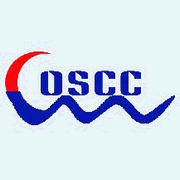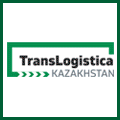PROLOGIS European Properties (PEPR), one of Europe's largest owners of modern distribution facilities, has announced the sale of eight logistics assets across Poland and Germany for a total of EUR71.8 million (US$95.8 million).
The company said in a statement that the net proceeds from the sale will be used to further deleverage the business.
The disposal in Poland, to privately-owned real estate firm Hines Global REIT, covers 73,000 square metres in five buildings, which are 93 per cent occupied, located in Warsaw and Bedzin. The aggregate sales price for the Polish portfolio was EUR51.2 million.
The disposal in Germany, to pan-European real estate investment manager Tristan Capital Partners, comprises just over 36,000 square metres in three fully occupied buildings, two of which are in Saarwellingen, western Germany, and one in Malsfeld in northern Germany. The aggregate sales price for the German portfolio was EUR20.6 million.
Said PEPR chief executive Peter Cassells: "These disposals are fully aligned with our active portfolio management strategy designed to optimise value for our unit holders through investment in core assets in prime locations."
Source Shipping Gazette - Daily Shipping News
A TORONTO area company's deodorants, chest rubs, petroleum jellies, soaps and cosmetics have been banned in the US by the Food and Drug Administration (FDA) from shipping products to dollar stores until it meets acceptable quality control standards.
The FDA accused Pax-All Manufacturing of failing to perform acceptable testing, labelling or documenting, and having no testing programme to assess proper storage or expiry dates, reported the Toronto Globe and Mail.
The FDA said it found, during an inspection last September, that Pax-All had not cleaned or maintained equipment "at appropriate intervals to prevent contamination that would alter the safety, identify, strength, quality or purity of the drug product investigators uncovered other deficiencies that lead us to question the effectiveness of your current quality system to achieve overall compliance with [good manufacturing practices] at your facility."
The agency cited Pax-All for using duct tape and cardboard to repair its filling lines. "These materials are not suitable materials of construction or easily cleanable, and are not adequate for the manufacture of drug products," the FDA letter said.
Pax-All is under an "import alert" and can't export products to the US until it can show the FDA it has complied with its standards.
Pax-All vice-president Mario Merino said "it's absurd" that the FDA has targeted the company, and said he has to put up with "hassles and inspections" that Asian manufacturers of similar products aren't subject to. "It's because we're close to them. It's easy for them to inspect us. They don't go there [to Thailand and China]."
Mr Merino said the company has less than US$15 million in annual revenue.
Said Consumer Federation of America director Rachel Weintraub: "We see concerns popping up about products in dollar stores."
Source Shipping Gazette - Daily Shipping News
SOUTHEAST Fujian province invested CNY3.5 billion (US$554 million) in road transport infrastructure in the first two months of this year, up 11 per cent year on year, reports Xinhua.
The investment in building mainline highway stood at CNY1.5 billion while that of rural highway cost CNY251 million to cover 221 kilometres.
By the end of February, the province has 78 projects of mainline highway under construction with a mileage of 1,037 kilometres. Six of the projects have been started while four will commence and completed this year.
Source Shipping Gazette - Daily Shipping News
NIPPON Express USA has announced the completion of its acquisition of Associated Global Systems, a global logistics service company based in New York. The move is intended to strengthen Nippon Express' presence in the US.
AGS has been providing logistics service since 1958 and now has 75 US locations and a worldwide network of overseas partners. The company provides warehousing and transport domestically and internationally, handling freight logistics for shipments of any size, including project and over-sized cargo. It transports freight to or from every zip code in the US and postal code in Canada and to 205 countries around the world. It also specialises in home domestic delivery services.
AGS will become a consolidated subsidiary of Nippon Express USA, which is a subsidiary of Nippon Express, a global logistics service provider. The impact of the transaction on Nippon Express consolidated earnings is expected to be non-material, said a company statement, which added that Jim Tucci will continue as CEO of AGS.
Said Nippon Express USA president Kenryo Senda: "With the addition of AGS' freight forwarding services, residential delivery, and e-commerce services, our clients will benefit from Nippon Express expanded service offering in the US."
Source Shipping Gazette - Daily Shipping News
A HIGH German federal court, upholding a lower court ruling, which overturned a still lower court's decision, has ended a debate over which liability system prevails in air cargo - the Montreal Convention or the German Commercial Code, according London's International Law Office, a legal news and commentary portal.
The plaintiff, the shipper's insurer, claimed compensation for loss of cargo from the defendant parcel service, which was flown from Cologne to Miami, then moved to the airline's warehouse, but was not delivered to the Miami consignee.
At first, the Dusseldorf District Court allowed the claim and ordered the defendant to pay EUR17,234 (US$22,667) in compensation plus interest based on the Commercial Code, ruling that the Montreal Convention did not apply because overland carriage was not mentioned in the air waybill.
But on appeal, the Dusseldorf Higher Regional Court ruled in favour of the less severe from the defendant's view point, Montreal Convention, and cut the award in half to EUR8,258 plus interest to cover the actual cargo loss alone.
In the next appeal, the Federal Court of Justice dismissed the claimant's plea and confirmed that judgment, ruling that the Montreal Convention prevailed in cases of overland carriage to an air carrier's warehouse following carriage by air.
With this judgment, the high court ended the debate over which system applies to an air carrier's liability for loss or damage to cargo when the cargo has left the airport, but has been brought to the air carrier's warehouse, said the commentary on the case.
"Views differed as to whether the national law or the Montreal Convention should apply. The [German] federal court has now settled for the Montreal Convention, ruling that an air carrier is liable for the entire time the goods are within its custody and extended the liability to risks which are not purely air transport, said the report, signed by Jens Jaeger or Marco Remiorz, lawyers at Hamburg's Dabelstein & Passehl.
Source Shipping Gazette - Daily Shipping News
AIR CANADA's pending strikes have been put on hold following the passage of anti-strike law forcing its machinists, of ground crew and mechanics and pilots unions to accept binding arbitration and abandon strike action.
The airline is also facing legal action from the Quebec provincial government over the closure of its aircraft maintenance company, Montreal-based Aveos Fleet Performance, which laid off 2,600 workers.
Despite legal action over two labour disputes referred to the Canada Industrial Relations Board (CIRB) by Canadian Labour Minister Lisa Raitt, wildcat strikes by ground crew has disrupted flights out of Toronto, Montreal and Quebec City on March 23. The walkout was allegedly prompted by the suspension of three workers at Toronto's Pearson International Airport for allegedly slow-clapping Ms Raitt at the airport.
The airline also asked the CIRB to end the "illegal strike" of its pilots when a higher-than-normal number sick calls were made on March 17. The pilots union who claim foggy weather resulted in flight cancellations denied this.
Once an arbitrator from a possible five has been chosen a final offer of the unions or the airline in its entirety within 90 days.
The Air Canada Pilots Association (ACPA) and the International Association of Machinists and Aerospace Workers (IAMAW), which represents 8,600 ground crew and mechanics at the airline, says it will challenge the back-to-work law as unconstitutional as it removes collective bargaining rights, said IAMAW vice president Dave Ritchie.
CIRB executive director has all three disputes in a "holding pattern" due to the legal challenges of the recent adoption of the back-to-work legislation which has "impacted on the urgency of dealing with the question of essential service."
Source Shipping Gazette - Daily Shipping News
AIR cargo entrepreneur Wayne Hoffman, retired chairman of Tiger International, the Century City-based parent company of Flying Tiger Line, has died at the age of 89 peacefully at his home in Indian Wells.
Hoffman retired from the firm in 1986, but continued to remain a consultant for the airline and was instrumental in positioning its freight business a result of a career begun in the railways after World War II.
"Freight became the cornerstone revenue producer of the airline under Wayne Hoffman's direction," said Flying Tiger Line chief operating officer Joseph Healy. "We weren't self-sustaining in freight until Hoffman came, and we started to grow at 25 per cent a year in freight."
Mr Hoffman began his career in the legal department of the Illinois Central Railroad, moving to the New York Central Railroad where he eventually became vice-president until 1967, recalled the Los Angeles Times obituary. Between 1968 and 1978, he was responsible for growing the airline from about US$76 million gross revenue to a half billion thought to have been helped by his transport management knowledge.
Described by some as blunt and informal, family friend Nissen Davis said his innovative vision as a multi-modal transport organisation which encompassed trucking and rail cargo transport was scuppered by recession of the early '80s and rising fuel prices and interest rates.
Born in Chicago in 1923, he went on to complete a law degree at Illinois University and then served in the army in World War II, flying combat missions in China against the Japanese. He won a Silver Star and two Purple Hearts and reached the rank of captain by end of war.
He leaves behind his wife of 66 years, three children, eight grandchildren and seven great-grandchildren.
Source Shipping Gazette - Daily Shipping News
On April 6 cruise ship MSC MELODY (204,7 m, flag of Panama) was moored at the berth #15 of the passenger terminal of the port of Odessa. According to Assistant Chief on duty of the passenger terminal of the port Sergey Sopilko, the ship with 1118 passengers onboard arrived to South Palmyra from Yalta. In order to meet tourists - the Germans, Englishmen, Frenchmen, Italians sightseeing bus tours on 12 buses are ordered by the company, tour operator "Inflot". A part of the guests chose to explore the main attractions of the historical center of Odessa with pedestrian tours. At 12:30 MSC MELODY will head for the next port of the Mediterranean-Black Sea Cruise - Istanbul. It should be noted that the vessel is moored in Odessa, an hour late than it is scheduled- due to heavy fog the ship was delayed on the roads. Last year, for the same reason, the captain of MSC MELODY general decided not to enter the port. At this time, thanks to the professionalism of the fleet towing service of the port of Odessa the liner has successfully been brought to the port in the morning fog. Press-Service, OCSP.
Source Odessa Commercial Sea Port
CHONGQING, the provincial status city on the upper reaches of the Yangtze, has recorded an international cargo volume of 1.11 million tonnes in January and February, 25 per cent more than in the same period in 2010. International containers totalled to 65,000 TEU.
Air cargo volume surged 180 per cent to 7,916 tonnes. On waterfront, trade cargo totals to 1.09 million tonnes, international containers jumped 33.9 per cent to 48,000 TEU. Overland trade cargo totalled 5,024 tonnes and 256 TEU.
Source Shipping Gazette - Daily Shipping News
MITSUI OSK Lines is facing its largest loss in history of JPY27 billion (US$0.32 billion) despite stable profits and cost-cutting the company has fallen into the red, said its president Koichi Muto at a 128th anniversary speech.
Factors such as the strong yen, high fuel prices, the impact of the earthquake and tsunami last year, and the economic slowdown in developed countries have weighed heavily on our performance, Mr Muto said, adding that the situation was also worsened by weak rates brought about by a glut of ships in almost every vessel category.
The delivery of new vessels will continue to negatively impact its operating results this year and unless cargo demand increases. It forecasts challenging market conditions into 2012 but a more favourable supply-demand balance for global fleet into 2013.
Despite a cost-cutting operation of JPY20 billion through the introduction of slow steaming the carrier is seeking further cost cuts if those that crept up without a loss to safe and high-quality services.
MOL is currently executing Phase 4 of its action plans for the reinforcement of operational safety, with the aim of becoming the world leader in safe operations to improve key performance indicators such as the accident rate.
MOL is investigating the cause of the collision of a MOL containership on the open seas southeast of Hong Kong on February 22 and stress the safety of seafarers, cargo and ships.
In order to manage the volatile market it has created a mid-term management plan in "GEAR UP! MOL" to create an earnings model unlike its traditional model-one that is resilient to drops in rates. It is also seeking to expand alliances in containerships and through pooling arrangements for tankers. It will focus on the LNG carrier business and energy-related marine business generated from it such as Floating Storage and Regasification Units (FSRUs).
Source Shipping Gazette - Daily Shipping News
UNITED ARAB EMIRATES Economic Minister Sultan bin Saeed al-Mansouri told a conference in Abu Dhabi that a global response was needed to meet threats of Iran shutting shipping lanes, piracy and volatile oil prices.
"The shipping business in general now has to address growing piracy threats. There are regional concerns too, especially those relating to the potential closure of shipping routes," Sultan bin Saeed al-Mansouri told a conference.
"These concerns have international implications and must be addressed in the spirit of cooperation and dialogue," he said, according to Reuters.
The UAE, one of the world's top oil exporters, ships crude through the Strait of Hormuz, which Iran has threatened to block as tensions between Tehran and the west have intensified over the last few months.
The Strait of Hormuz is patrolled by naval forces of the US, France and Britain. Mr Mansouri called for more cooperation on fighting pirates and said merchant shipping was likely to be hit by current oil price fluctuations.
Shipping accounts for 80 per cent of global trade, and sea borne trade volumes have quadrupled over the last four decades, Mr Mansouri said, adding that Abu Dhabi's new Khalifa Port would become operational in the fourth quarter of 2012.
Source Shipping Gazette - Daily Shipping News
PORT of Valencia aims to live up to its position as the largest sea port in Spain and the Mediterranean basin by investing in rail links into France and lowering transhipment costs.
Until last year different rail gauges in Spain and the rest of Europe stymied Spanish efforts to intercept cargo to and from the Far East via Suez, inducing it to take the long way round the Iberian Peninsula and land at northern European ports.
Valencia Port Authority president Rafael Aznar is keen to become the "best connected port in the Spanish port system" by increasing trade flow to Asia already well accommodated by northern Europe ports by being "faster, cheaper and sustainable" and providing "competitive prices."
"Valencia aims to offer the market a global offering taking everything into account, not just tariffs but also cost of operation. This is one of the challenges for the future and we are working on that," Mr Aznar told a London School of Economics seminar workshop, reported the UK's Port Strategy International.
To keep hold of dominance over neighbouring rival port of Castellon, port operators at Valencia have advised to lower costs rather than risk the loss of one million TEU annually.
Also competing for European cargo is Barcelona. While Valencia, which also benefits from a major transshipment trade from Asia to West Africa and North America and is closer to Spain's main Madrid market, Barcelona is much closer to the French border with shorter rail connections to Bordeaux, Lyons and points north.
The port of Castellon has dropped its tariffs 70 per cent to gain some traffic siphoned off to Valencia, which can handle postpanamax vessels of 18,000 TEU, unloading of 3,000-5,000 TEU during one call.
"We have to be able to respond to the increasing extra capacity of ships to remain competitive," he added of the need for a rail link through France which could cut journey time by three to four days from Gibraltar and up into northern Europe.
Source Shipping Gazette - Daily Shipping News
PERU's National Port Authority predicts that cargo handled by its national ports will rise by 14-15 per cent annually for the next five years.
By 2014, it says national container throughput will rise to two million TEU, rising to 3.5 million TEU by 2018.
The forecast is based on the US$3 billion to be spent over the next five years on upgrading eight Peruvian ports reports the UK's Port Strategy. The ports include Paita, Salaverry, Chimbote, Callao, San Juan de Marcona, Ilo, Matarani and the river port of Iquitos.
Source Shipping Gazette - Daily Shipping News
EVERGREEN Shipping Agency (America) has named the Canadian National Railway (CN) as the 2011 Railroad Company of the Year because of its "consistently high performance."
"CN's consistent high level of performance, particularly in comparison to its competitors, has earned CN this recognition. Evergreen appreciates and recognises CN's excellence in quality, service and support of our mutual customers and encourages CN to continually improve its performance," said Evergreen Shipping Agency (America) president Roy Amalfitano.
Said CN vice president Jean-Jacques Ruest: "CN is honoured to have received this award, which recognises our clear focus on improving the quality of our customers' supply chains."
Taiwan's Evergreen Line discharges and loads containers for CN at Port Metro Vancouver. CN hauls Evergreen Line traffic between the port and the Canadian cities of Edmonton, Calgary, Saskatoon, Winnipeg, Toronto and Montreal.
CN and its units spans Canada and mid-America, from the Atlantic and Pacific oceans to the Gulf of Mexico, serving the ports of Vancouver, Prince Rupert, Montreal, Halifax, New Orleans, and Mobile, Alabama., and the key metropolitan areas of Toronto, Buffalo, Chicago, Detroit, Duluth, Green Bay, Minneapolis/St. Paul, Memphis and Jackson, Mississippi with connections to all points in North America.
Source Shipping Gazette - Daily Shipping News
NORTHERN China's Shijiazhuang airport has inaugurated an all-cargo Korean service to Seoul, Xinhua reports.
This is Shijiazhuang airport's first international cargo service and is jointly operated by China Postal Airlines and Asia Pacific Cargo (APC). It offers three flights a week on Mondays, Wednesdays and Fridays, using Boeing 737-300 freighter that can carry up to 16 tonnes. The flight takes off at 1200 hrs from Shijiazhuang, reaches Seoul at 1340 hrs, then returns from Seoul at 1450 hrs to land at Shijiazhuang at 1700 hrs.
International cargo services have been absent at the Shijiazhuang airport as the city does not have a steady source of cargo. Some of the local shipments used to have to transit via Beijing or Tianjin. The authority is hoping the new international cargo service can attract more manufacturers to set up factories in the city.
Source Shipping Gazette - Daily Shipping News
The magazine SEA has been published since 1935
International business magazine JŪRA MOPE SEA has been published since 1999
The first magazine in Eurasia in the four languages: English, Chinese, Russian and Lithuanian
|
|




.jpg)






